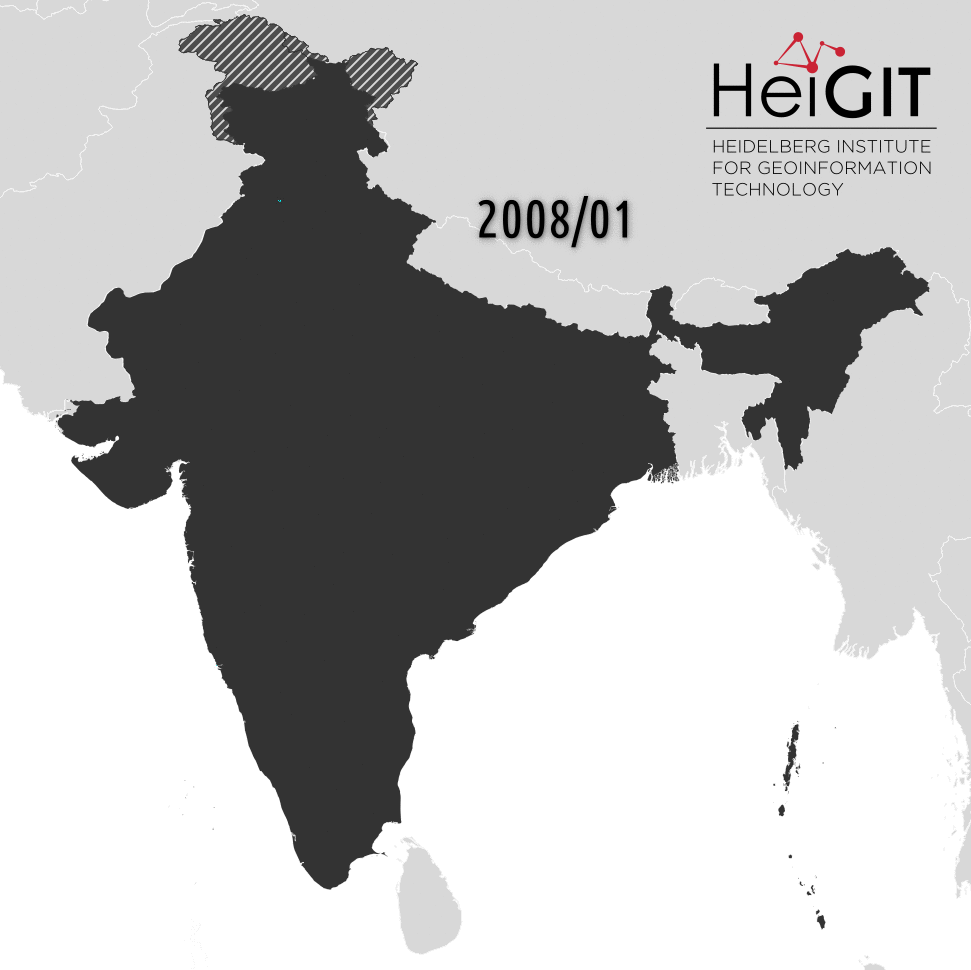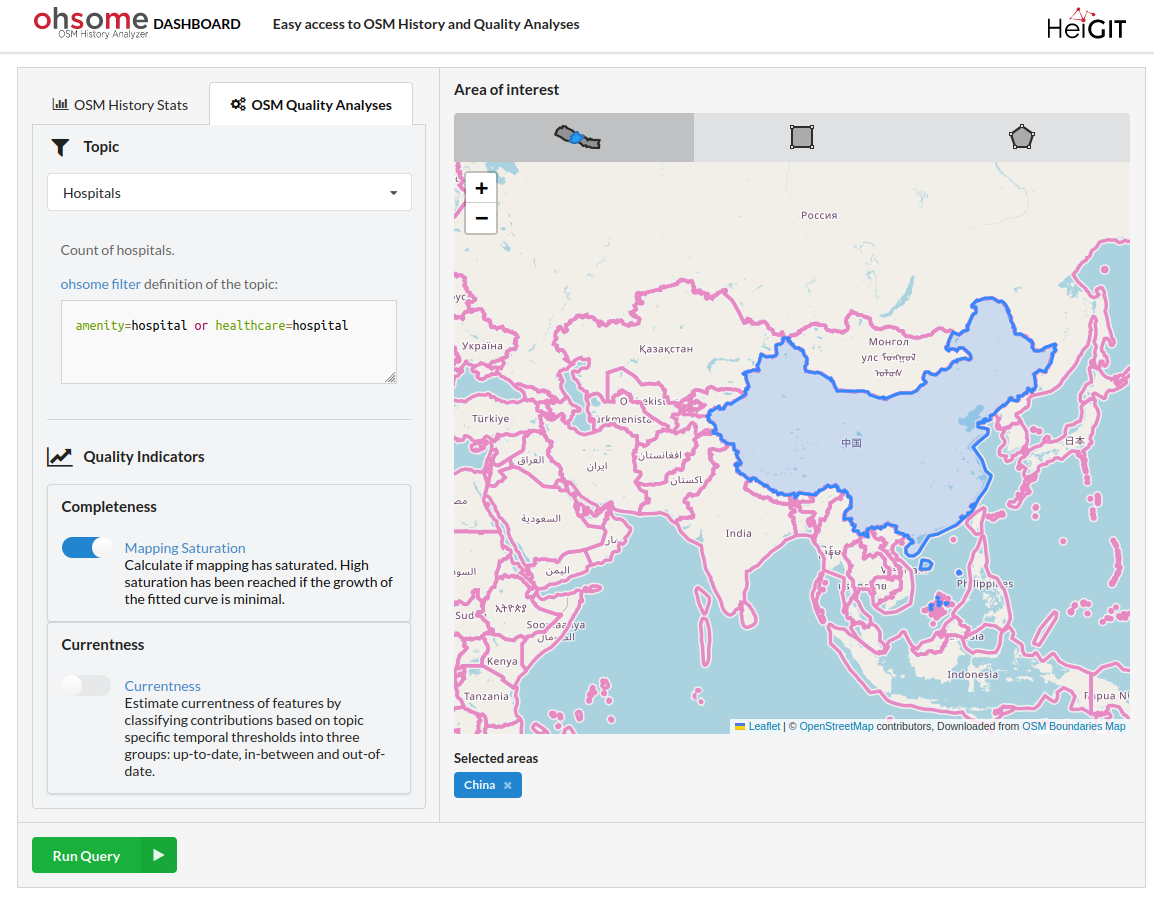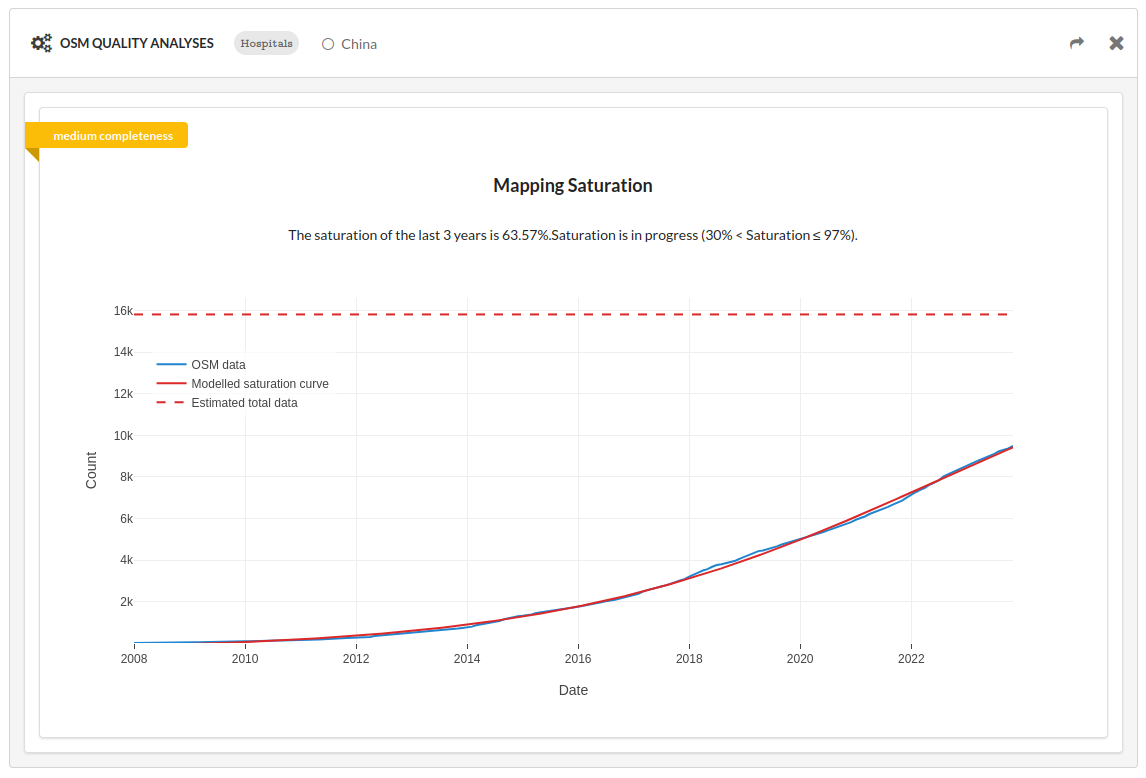Exercise 06: Completeness II - Mapping Saturation#
Motivation#
Exploring how OpenStreetMap data developed over time across different administrative units might reveal interesting insights into the self organizing approach of the OSM communities and can potentially be used to derive intrinsic data quality indicators. It might even be possible to estimate the completeness of OSM for a specific key-value combination as done by [Barrington-Leigh and Millard-Ball, 2017] for the road network.
[Brückner et al., 2021] have estimated the completeness of the number of OpenStreetMap (OSM) retail stores for two federal states of Germany at district level. In their work they have used an intrinsic measurement that fits saturation models on the cumulative curve of the number of OSM retail stores over time.
“The underlying idea of the intrinsic completeness analysis is that the added number of OSM objects of a specific feature class per time period decreases as the number of mapped objects converges against the (unknown) true number of objects. The cumulative number of OSM objects would then saturate. Given a sufficient mapping activity it is possible to estimate the saturation level using a suitable function in the context of a non-linear regression approach.” [Brückner et al., 2021]


